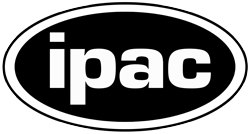Euclid has two instruments: a wide-field visible light imager, and a near-infrared imaging photometer and slitless spectrometer:
VIS instrument: (click here for ESA's Euclid VIS page)
- Focal plane array: 6×6 CCDs (4k×4k pixels each) with 0.101 arcsec pixel platescale
- Field of view: 0.56 (deg)2
- Wavelength coverage: one wide visible band (550-900 nm)
- System point-spread function: 0.16 arcsec (FWHM) excluding pixelisation
NISP instrument: (click here for ESA's Euclid NISP page)
- Focal plane array: 4×4 HgCdTe NIR detectors (2k×2k pixels each) with 0.3 arcsec per pixel and 2.3 µm cut-off wavelength.
- Imaging bands: Y (0.95 to 1.192 µm), J (1.192 to 1.544 µm), H (1.544 to 2 µm)
- Grisms: 1 blue grism (0.92 to 1.3 µm); 3 identical red grisms (1.25 to 1.85 µm) at position angles 0 deg, 90 deg, 180 deg.
- Spectral resolution: constant Δλ at λ/Δλ ˃ 380 for an object of 0.5 arcsec diameter
- FoV: 0.55 (deg)2
FoV common to VIS & NISP: 0.53 (deg)2
Euclid’s payload module, consisting of a silicon baseplate supporting the telescope and two instruments, VIS and NISP. VIS is visible towards the top, which, with more than 600 mega pixels, will be one of the biggest cameras in space. NISP is to the right. The telescope’s primary and secondary mirrors are hidden from view and inside the white baffle with gold multi-layer insulation, underneath the baseplate in this orientation. (Credit: ESA)
